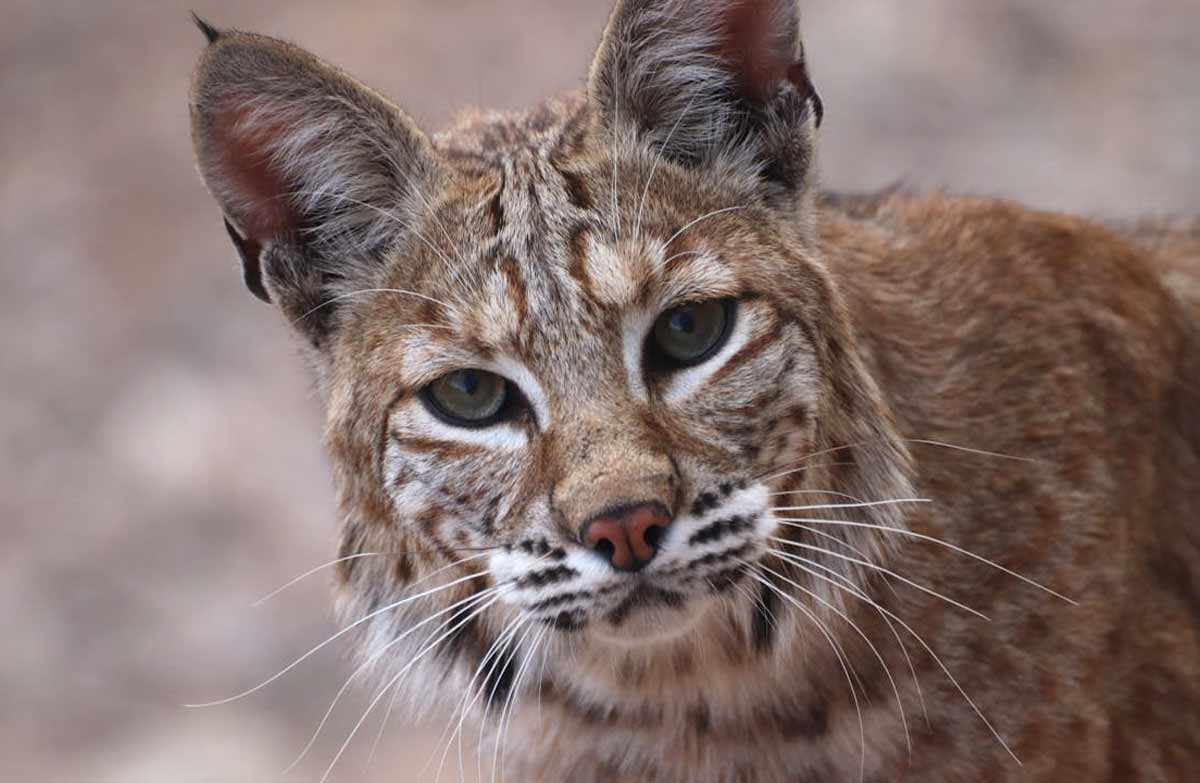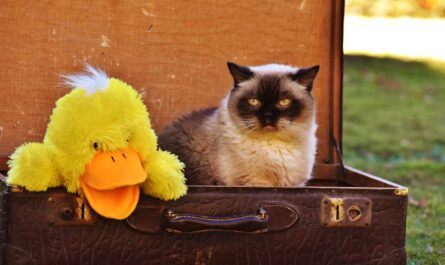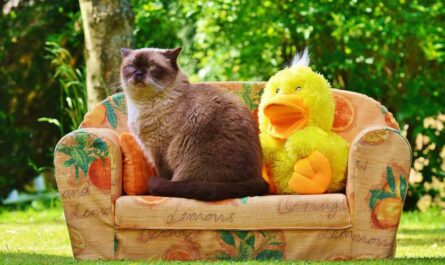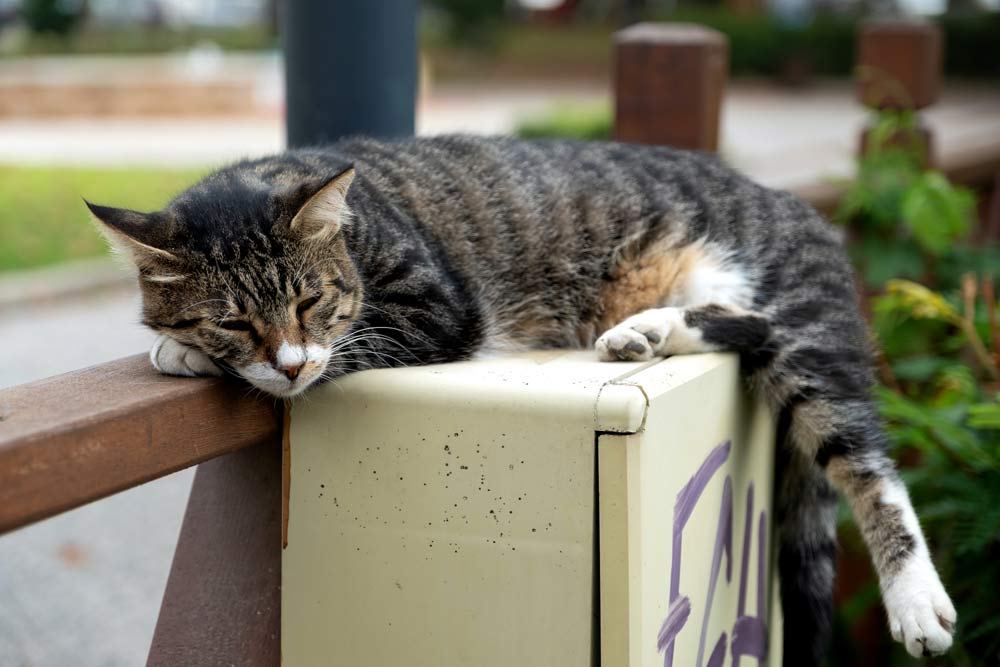How to tell if your cat is mixed with a bobcat? Have you ever gazed upon your feline friend and wondered, “Is there more to this whiskered wonder than meets the eye?” Perhaps their gaze lingers a little too intently on the birds flitting by the window, or their playful swats seem imbued with an unexpected ferocity. Maybe their fur boasts unusual markings or their physique is a tad sturdier than the average house cat. These intriguing characteristics might spark a question: could your cherished companion harbor a touch of wild blood, a hint of bobcat heritage?
This article aims to be your guide on this exploratory journey. We’ll delve into the fascinating, yet uncommon, possibility of your cat having bobcat ancestry. We’ll explore the physical and behavioral traits that might hint at a wild lineage, discuss responsible ownership considerations for such unique felines, and provide resources for seeking professional confirmation.
While it’s important to acknowledge the rarity of natural hybridization between domestic cats and bobcats, stranger things have happened in the animal kingdom! So, let’s embark on this adventure of discovery, keeping an open mind and a loving heart for your feline friend.
Myth vs. Reality: Demystifying Cat-Bobcat Hybrids
The internet is rife with captivating images of exotic-looking felines, often touted as cat-bobcat hybrids. These pictures can spark curiosity, but it’s important to separate fact from fiction when it comes to these intriguing creatures. In this section, we’ll delve into the biological realities of cat-bobcat hybrids, exploring the challenges of such pairings and the ethical considerations surrounding their existence.
A Matter of Biology: When Species Don’t Quite Match
Domestic cats (Felis catus) and bobcats (Lynx rufus) may belong to the same family (Felidae), but significant biological differences stand in the way of easy interbreeding. Let’s take a closer look at these distinctions:
-
The Chromosome Count Challenge: Successful reproduction relies on compatible chromosomes, the tiny structures within cells that carry genetic information. Domestic cats have 38 chromosomes, while bobcats have 32. This significant difference creates a major obstacle for fertilization and healthy offspring development in most cases. Imagine trying to complete a complex puzzle with mismatched pieces – it’s simply very difficult to achieve.
-
Species Specificity: Beyond chromosomes, cats and bobcats have evolved along separate paths, developing distinct physical characteristics and behavioral patterns. These differences can also hinder successful mating. A bobcat, for instance, might not recognize a domestic cat as a potential mate due to scent cues or visual signals.
The Rarity of Natural Hybrids: A Chance Encounter
Natural occurrences of cat-bobcat hybrids are exceptionally rare in the wild. Here’s why:
-
Geographic Separation: Domestic cats and bobcats typically inhabit different environments. Domestic cats tend to thrive alongside humans in urban and suburban settings, while bobcats are solitary creatures preferring wilder, less disturbed habitats. This geographical separation minimizes the chance of these two species encountering each other, let alone attempting to mate.
-
Mating Behavior Differences: Even if a domestic cat and a bobcat were to cross paths, their mating behaviors wouldn’t necessarily align. Bobcats are seasonal breeders, while domestic cats can reproduce year-round. Additionally, bobcats exhibit more aggressive courtship rituals compared to the subtler cues of domestic cats. These mismatched behaviors further decrease the likelihood of a successful natural pairing.
Captive Breeding Controversy: A Question of Ethics
The deliberate breeding of cat-bobcat hybrids in captivity raises significant ethical concerns. These hybrids often inherit unpredictable temperaments, blending the hunting instincts of a bobcat with the domesticity of a cat. This can result in animals with behavioral issues that are difficult to manage and unsuitable for most living situations.
Furthermore, the breeding process itself can be exploitative, with breeders prioritizing novelty over the well-being of the animals involved.
It’s important to remember that countless wonderful domestic cats are waiting for loving homes in shelters and rescues. If you’re looking for a feline companion, consider adopting a cat from a reputable organization. You might just find a furry friend with a unique personality and a story all its own.
Beyond Whiskers: Physical Signs of Bobcat Ancestry
Have you ever looked into your feline friend’s eyes and wondered, “Could there be a touch of wildcat in there?” While the idea of a cat with bobcat heritage is undeniably intriguing, it’s important to approach this question with a dose of reason. True domestic bobcat hybrids are exceptionally rare. Breeding programs involving wild animals are heavily regulated, and for good reason. Bobcats are wild creatures with strong instincts, not ideal companions for most households.
That being said, there’s always a chance your cat might have some distant bobcat ancestry in its lineage. Let’s delve into some of the physical characteristics that might hint at a touch of wildness in your furry companion. Remember, these are just clues, and not all cats with these traits will have bobcat blood.
The Coat Tells a Story: A Mark of Heritage
One of the most telling signs of bobcat ancestry can be found in your cat’s fur. Unlike the vast array of coat colors and patterns seen in domestic felines, bobcats typically sport a spotted or speckled coat with a reddish-brown base color. So, if your cat has a spotted tabby pattern, particularly with a rusty or reddish hue, it could be a subtle nod to its wild heritage.
Another giveaway is the tail. Bobcats have distinctive black-tipped tails that are much shorter than those of most domestic cats. While a completely black tail wouldn’t necessarily indicate bobcat ancestry, a black tip on an otherwise patterned or reddish tail might be a hint of something wilder lurking beneath the surface.
Size Matters: A Built for the Wild Physique
Bobcats are stockier and larger than your average house cat. They possess a more muscular build with longer legs, adaptations that aid them in hunting and navigating their natural habitat. If your cat seems noticeably bigger and more robust compared to other domestic felines, it could be a sign of bobcat’s influence in its genetic makeup.
However, it’s important to consider breed variations. Certain domestic cat breeds, like Maine Coons or Ragdolls, are naturally larger than your typical tabby or Siamese. If you know your cat’s breed, you can compare its size to the breed standard to get a better sense of whether its size suggests bobcat ancestry.
Ears and Eyes That Hint at Wildness
A bobcat’s face has distinct features compared to a domestic cat. Bobcats have pointed ears with prominent tufts of fur at the tips. While ear tufts are not entirely unheard of in some domestic cat breeds like the American Curl, their presence, particularly combined with a more pointed ear shape, could be a subtle indicator of bobcat heritage in your feline friend.
Another facial feature to consider is the eye shape. Bobcats have a more oval eye shape compared to the rounder eyes of most domestic cats. If your cat’s eyes seem slightly elongated and almond-shaped, it might be a faint echo of its wild ancestry.
Important Note: It’s important to remember that these physical characteristics can also be present in some domestic cat breeds or simply be natural variations. If you suspect your cat might have bobcat ancestry, consulting a veterinarian or a cat breed expert can provide more definitive insights.
Beyond the Purr: Unveiling Behavioral Clues
While physical characteristics can offer some hints, a cat’s behavior can also provide valuable clues about its ancestry. Here, we’ll delve into some potential behavioral signs that might suggest a touch of the wild in your feline friend.
The Call of the Wild: A Chattier Cat?
Our domesticated house cats are renowned for their soft purrs and the occasional meow. However, cats with bobcat heritage might express themselves vocally in a slightly different way.
-
A Symphony of Growls and Hisses: Bobcats are known for their diverse vocalizations, which extend beyond the typical meow. A mixed-breed cat might inherit this broader range of sounds, including growls, hisses, and even chirps. These vocalizations can be used to communicate a variety of emotions, from territorial defense to playful excitement.
-
Understanding the Context: It’s important to remember that vocalizations alone aren’t a definitive sign of bobcat ancestry. Cats of all breeds use sounds to communicate, and observing the context is crucial for interpreting the message. For instance, a low growl might indicate fear or aggression, while a high-pitched chirp could be a sign of excitement during playtime.
Remember: If your cat’s vocalizations seem excessive or out of character, consulting a veterinarian or animal behaviorist can help ensure they’re expressing themselves healthily and happily.
A Hunting Instinct: Born to Chase
Domestic cats retain a strong instinct to hunt, a legacy from their wild ancestors. However, cats with bobcat heritage might exhibit this hunting drive with even greater intensity.
-
The Thrill of the Chase: Bobcats are skilled predators, and their mixed-breed descendants might inherit a heightened focus on stalking, chasing, and pouncing. This can manifest in playful behaviors like enthusiastic batting at toys or a fascination with fluttering objects like leaves or feathers.
-
Providing Enrichment: While a healthy dose of hunting instinct is natural, it’s important to provide appropriate outlets for this behavior in a safe and controlled environment. Interactive toys, puzzle feeders, and even indoor “cat grass” can help your feline friend satisfy their hunting urges without wreaking havoc on your curtains!
Keep in mind: Excessive hunting behaviors, particularly directed towards other pets or wildlife, might require additional training or environmental adjustments. Consulting a certified animal behaviorist can provide valuable guidance in such situations.
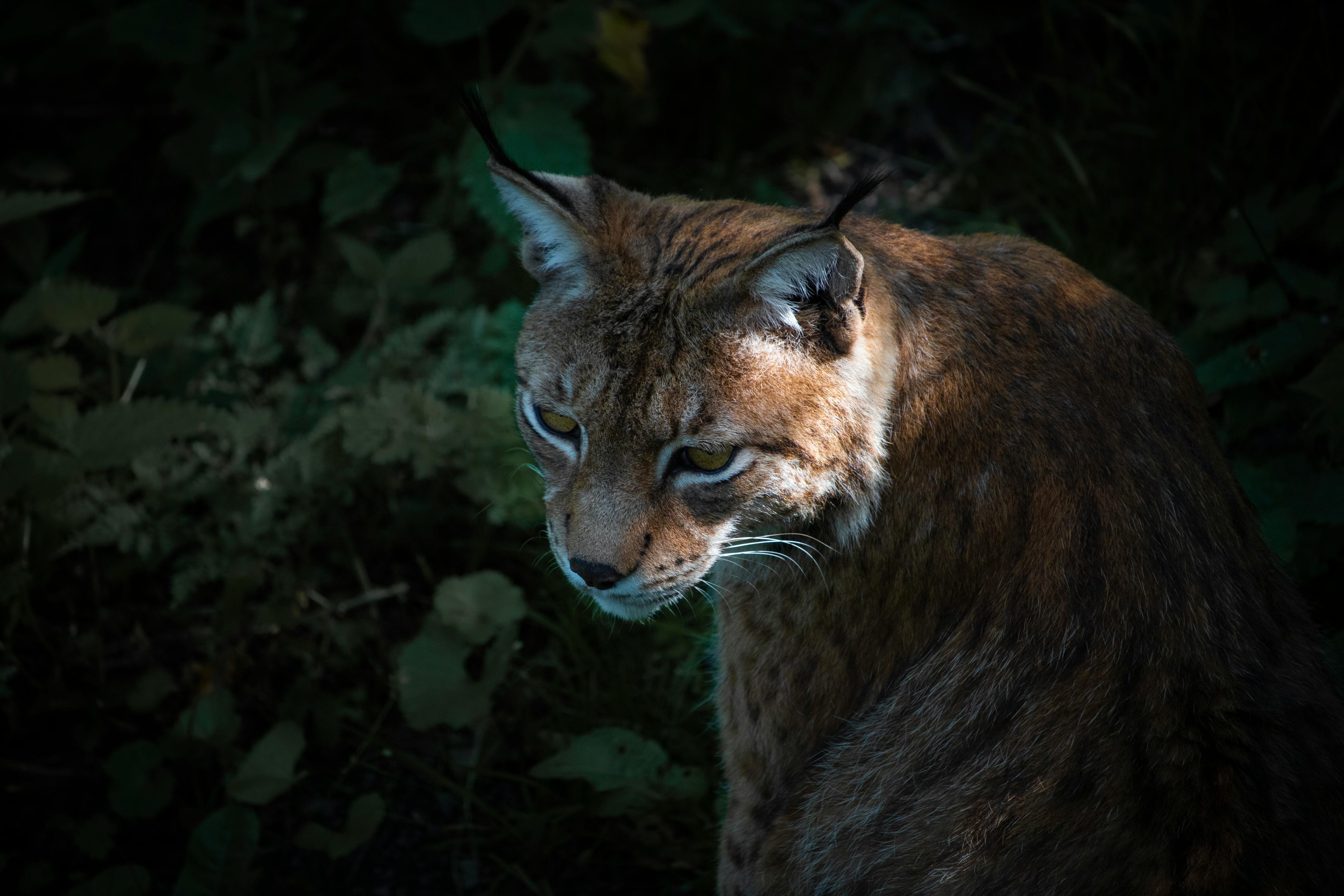
Independent Spirit: A Cat Who Marches to the Beat of Their Own Drum
Domestic cats can be quite affectionate and social creatures, often seeking out our company for cuddles and playtime. However, cats with bobcat ancestry might exhibit a slightly more independent streak.
-
A Lone Wolf at Heart: Bobcats are solitary animals, and their mixed-breed offspring might inherit a preference for spending time alone. This doesn’t necessarily mean they’re aloof or unfriendly, but they might crave their own space and enjoy independent activities.
-
Respecting Boundaries: It’s important to respect your cat’s need for solitude and avoid forcing them into constant interaction. Provide them with cozy hideaways and vertical spaces where they can retreat when they desire peace.
-
Building a Bond: Even independent cats can form strong bonds with their humans. The key is to approach them on their terms. Offer affection when they seem receptive and avoid overwhelming them with unwanted attention. Interactive playtime and positive reinforcement can strengthen your relationship and build mutual trust.
It’s important to remember: These behavioral traits are just possibilities, and every cat is an individual. Some mixed-breed cats might exhibit none of these characteristics, while others might display them to varying degrees. The most important thing is to observe your cat’s unique personality and provide them with a loving and enriching environment that caters to their specific needs.
Responsible Ownership: Caring for a Cat with Wild Ancestry
Owning a cat with a touch of wild blood in their lineage can be an incredibly rewarding experience. These felines often possess captivating features and energetic personalities. However, it’s important to remember that their heritage might come with some unique needs and considerations. Here, we’ll explore some key aspects of responsible ownership for cats with potential wild ancestry, ensuring a happy and harmonious life for both you and your furry companion.
Safety First: A Top Priority
The safety of both you and your feline friend is paramount. Here’s what to keep in mind:
-
Understanding Predatory Instincts: Cats with wild ancestry may retain a stronger prey drive compared to their domestic counterparts. This can manifest in chasing after smaller animals like birds or rodents. While this behavior is natural, it can pose a threat to local wildlife if your cat ventures outdoors. Consider creating a safe and stimulating indoor environment or utilizing a secure outdoor enclosure if you allow supervised outdoor access.
-
Children and Playtime: While cats with wild ancestry can be playful and affectionate, their exuberance might be overwhelming for young children. It’s crucial to supervise interactions and teach children gentle play techniques. Provide ample outlets for your cat’s energy through interactive toys and climbing structures to minimize the risk of scratches or nips.
-
Establishing Boundaries: Cats with a touch of wildness might have a greater need for independence. Respecting their boundaries is key. Offer them designated scratching posts and hiding spots where they can retreat when they need some quiet time. This helps build trust and prevents potential behavioral issues.
Providing Enrichment: Unleashing the Inner Hunter
Cats with wild ancestry often possess a heightened hunting instinct. Providing enrichment activities that cater to this natural drive is essential for their well-being. Here are some ideas:
-
Puzzle Feeders: These interactive feeders challenge your cat to problem-solve and work for their food. This not only mimics the thrill of the hunt but also promotes mental stimulation and prevents boredom.
-
Interactive Toys: Feathery wands, laser pointers, and other interactive toys mimic the movement of prey, keeping your cat engaged and entertained. These playful sessions also strengthen your bond with your feline friend.
-
Cat Grass: Growing cat grass indoors provides a safe and healthy outlet for your cat’s chewing and grazing instincts.
Understanding Boundaries: Respecting Individuality
Every cat, regardless of ancestry, is an individual with unique needs and personalities. Cats with wild ancestry might crave more space compared to their purely domestic counterparts. Here’s how to foster a harmonious coexistence:
-
Vertical Territory: Provide ample vertical space with climbing structures and cat trees. This allows your cat to observe their surroundings from a height, mimicking their natural instinct to survey their territory.
-
Respectful Interactions: Pay close attention to your cat’s body language. If they flatten their ears or swat their tail, it’s a sign they need some alone time. Respect these boundaries and avoid initiating unwanted petting or interaction during these moments.
-
Seeking Professional Guidance: If you have any concerns about your cat’s behavior, temperament, or potential safety risks, consulting a veterinarian or animal behaviorist can be incredibly helpful. They can offer personalized advice and training techniques to ensure a positive and fulfilling relationship with your feline companion.
Remember, owning a cat with wild ancestry presents a unique opportunity to connect with a creature with a rich natural heritage. By prioritizing safety, providing enrichment activities, and respecting their individual needs, you can create a loving and enriching environment where both you and your cat can thrive.
Unveiling the Mystery: DNA Testing and Expert Advice
So, you’ve got a feline friend who sparks curiosity with their unique characteristics. Perhaps their wild side peeks through in their hunting prowess or their independent spirit. You might wonder, “Could my cat be part bobcat?” While some physical traits can offer clues, the most definitive answer lies in science – and sometimes, consulting a professional.
The Science of Certainty: DNA Testing for Cats
For the most accurate answer to the question of bobcat ancestry, DNA testing reigns supreme. This method analyzes your cat’s genetic makeup, revealing not only their breed heritage but also potential wild cat relatives lurking in their family tree. Here’s a breakdown of how DNA testing works for cats:
-
Sample Collection: The process typically involves collecting a small cheek swab sample from your cat’s inner cheek. It’s a painless procedure that can be done at home with a commercially available kit or by a veterinarian.
-
Laboratory Analysis: Once collected, the sample is sent to a specialized laboratory for analysis. Technicians will isolate and analyze your cat’s DNA, comparing it to a vast database of feline genetic markers.
-
Results Revealed: Within a few weeks, you’ll receive a detailed report outlining your cat’s breed composition. The report might indicate a purebred origin, a mix of domestic breeds, or even a percentage of wild cat ancestry, including bobcat.
DNA testing offers peace of mind and valuable insights. It can help you understand your cat’s potential health predispositions, and inherited traits, and even guide you towards breed-specific care and training methods.
Important Note: Before opting for a DNA test, research reputable companies offering feline genetic testing. Look for companies accredited by organizations like the American Animal Hospital Association (AAHA) to ensure the accuracy and validity of the results.
Consulting Feline Experts: Unveiling More Than Genetics
While DNA testing provides a definitive answer to ancestry, consulting with experienced feline professionals can offer a wealth of additional knowledge and support. Here’s how veterinarians and animal behaviorists specializing in wild cats can be valuable resources:
-
Veterinary Expertise: An experienced veterinarian familiar with wild cat hybrids can perform a thorough physical examination of your cat. They can assess your cat’s overall health, identify any potential health concerns that might be linked to wild cat ancestry, and offer guidance on proper care and nutrition tailored to your unique feline friend. RPM 3.0 – 60% CONVERSION & Money for Affiliate Marketing
-
Understanding Behavior: Animal behaviorists with expertise in wild cats can provide valuable insights into your cat’s natural instincts and behaviors. They can help you decipher why your cat might exhibit certain behaviors, such as a strong prey drive or a preference for solitude. This knowledge can empower you to create a safe and enriching environment that caters to your cat’s specific needs.
Remember: Consulting with a veterinarian or animal behaviorist is not just about confirming bobcat ancestry. It’s about building a strong foundation for a happy and healthy life for your feline companion. These professionals can offer valuable advice on training, enrichment activities, and potential challenges you might face with a cat that has wild cat heritage.
Navigating Local Regulations: A Responsible Cat Owner’s Duty
Before diving headfirst into the world of wild cat ancestry, it’s crucial to research the legal landscape in your area. Some regions have specific regulations regarding the ownership of wild cat hybrids. These regulations might involve permitting requirements, restrictions on breeding, or even outright bans.
-
Responsible Ownership: Understanding and adhering to local regulations is an essential part of being a responsible cat owner. By familiarizing yourself with the legalities, you can ensure that your cat has a safe and legal home with you.
-
Considering Rehoming: In some cases, depending on your location and the results of DNA testing, rehoming your cat to a sanctuary or rescue experienced in handling wild cat hybrids might be the most responsible course of action. These facilities have the expertise and resources to provide specialized care and a safe environment for cats with wild ancestry. Cat accessories on Amazon
Remember: The well-being of your cat is paramount. By researching local regulations and considering all your options, you can make an informed decision that prioritizes your cat’s safety and happiness.
Final thought: Celebrating Your Unique Feline Friend
The journey to explore your cat’s possible bobcat heritage can be a fascinating one. But remember, even if conclusive proof remains elusive, the most important aspect is cherishing your feline companion for the unique individual they are. Embrace their quirks, appreciate their personality, and revel in the special bond they share. After all, the joy of the journey lies not just in the destination, but in the love and companionship you build with your furry friend. So, celebrate the mystery, embrace the unknown, and shower your cat with all the love and care they deserve!
Other Interesting Articles
- How to Help Your Cat Overcome Fears in 13 Strategic Steps
- 13 Easy Tricks To Teach Your Cat: Basic Feline Training Guide
- How To Train Your Cat: 15 Easy Steps To Teach New Things
- Why Do Cats Have Tails? 4 Fun Facts You Didn’t Know
- 16 Simple Ways To Establish A Stronger Bond With Your Cat
- How To Train Your Cat/Kitten To Sit: Steps, Command, Guide
- Cat Giving Birth: From Your Feline Pregnancy to Kitten Care
- Fading Kitten Syndrome: Age, Causes, Symptoms, Treatment
- Kitten Bottle Feeding: Chart, Tips, Recipe, Challenges, Guide
- Cat Pregnancy: Timeline, Signs, Labor, Behavior, Stages
- 16 Silent Killers of Cats Every Pet Owner Must Be Aware Of
- Do Mother Cats Discipline Their Kittens? A Guide To Owners
- How To Take Care of A Kitten 6 Weeks Old: A 7-Step Guide
- How To Tell If Your Cat is Trying to Hurt You: A To-Do Guide
- How To Tell If Your Cat Has Tapeworms: What You Can Do
- How To Tell If My Cat is in Pain After Neutering: What To Do
- How To Get A Cat To Trust You Fast: Signs, Tips, Techniques
- 12 Signs Your Cat is a Boy: Tips To Distinguish A Male Cat
- Single Kitten Syndrome: Age, Signs, Symptoms, Treatments
- How To Tell If Your Cat Can’t See Well: What You Can Do
